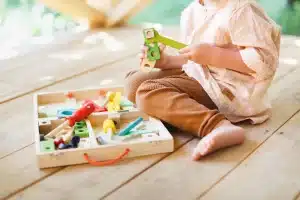The Role of Construction Toys in Developing Problem-Solving Skills
Introduction
Construction toys are not just for fun and entertainment; they play a vital role in the development of problem-solving skills in children. As children engage in building and constructing with these toys, they are unknowingly enhancing their cognitive abilities and fostering their problem-solving capabilities. In this blog article, we will explore the various features of construction toys and how they contribute to the development of problem-solving skills.
Features of Construction Toys
- 1. Building Blocks:
- 2. Connectors and Fasteners:
- 3. Interchangeable Parts:
- 4. Moving Parts and Mechanisms:
- 5. Puzzles and Challenges:
Building blocks are fundamental construction toys that encourage children to use their creativity and spatial skills. These toys provide them with the opportunity to assemble different pieces into various structures, pushing them to think critically and problem-solve how to make their creations stable and balanced.
Construction toys that come with connectors and fasteners challenge children to find innovative ways to connect different components. This feature promotes problem-solving by requiring them to think about the best methods for joining pieces securely while considering factors such as stability and durability.
Construction toys equipped with interchangeable parts allow children to experiment and explore different configurations. They need to think critically about how each part fits together and identify the best combination that will achieve their desired outcome. This process enhances their problem-solving abilities by encouraging them to consider different possibilities and make informed decisions.
Toys with moving parts and mechanisms introduce children to basic engineering principles. They need to analyze how these components interact and find ways to make them function properly. These toys challenge children to troubleshoot issues, experiment with adjustments, and solve problems independently.
Construction toys that include puzzles and challenges provide children with specific problem-solving scenarios. These toys often present obstacles that require them to think critically, devise strategies, and work through sequential steps to overcome the challenges. By engaging in these activities, children develop problem-solving skills that can be applied to real-life situations.
Developing Problem-Solving Skills through Construction Toys
Now that we have examined the various features of construction toys, let’s understand how they contribute to the development of problem-solving skills:
- Enhanced Spatial Awareness:
- Improved Critical Thinking:
- Promoting Creativity and Innovation:
- Building Resilience and Perseverance:
- Strengthening Collaboration and Communication:
Playing with construction toys helps children develop a better understanding of spatial relationships. They learn to visualize objects in three dimensions, which is a fundamental aspect of problem-solving.
Construction toys push children to think critically and logically. They have to analyze problems, break them down into smaller components, and identify effective solutions. This process strengthens their ability to approach challenges with a problem-solving mindset.
Construction toys spark creativity and innovation as children have the freedom to experiment with different configurations and designs. This freedom encourages them to think outside the box, explore unconventional solutions, and expand their problem-solving capabilities.
Problem-solving often requires resilience and perseverance. Construction toys provide an environment where children can face obstacles, encounter setbacks, and learn to overcome them through trial and error. This process instills resilience and the motivation to persist until a satisfactory solution is found.
Construction toys also promote collaboration and communication skills. When working on complex structures or solving problems together, children learn to express their ideas, listen to others, and work as a team, developing valuable interpersonal skills that are essential for solving problems in real-life scenarios.
Conclusion
Construction toys offer more than just entertainment; they actively contribute to the development of problem-solving skills in children. With their diverse features and interactive nature, these toys encourage spatial awareness, critical thinking, creativity, resilience, and collaboration. By providing children with opportunities to engage in hands-on problem-solving, construction toys set the foundation for their cognitive development and nurtures their ability to tackle challenges effectively.





